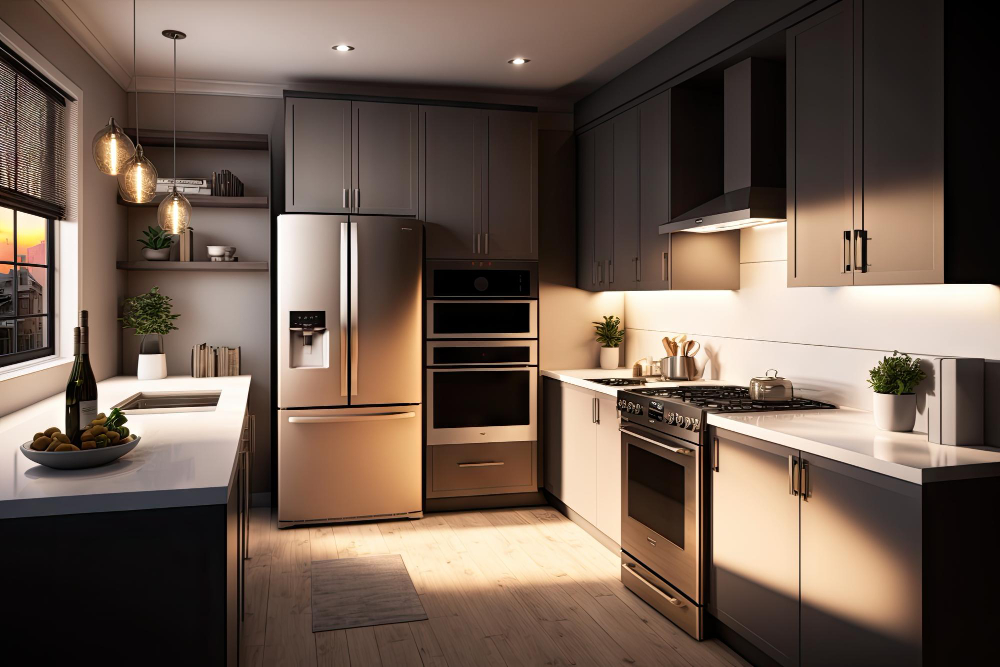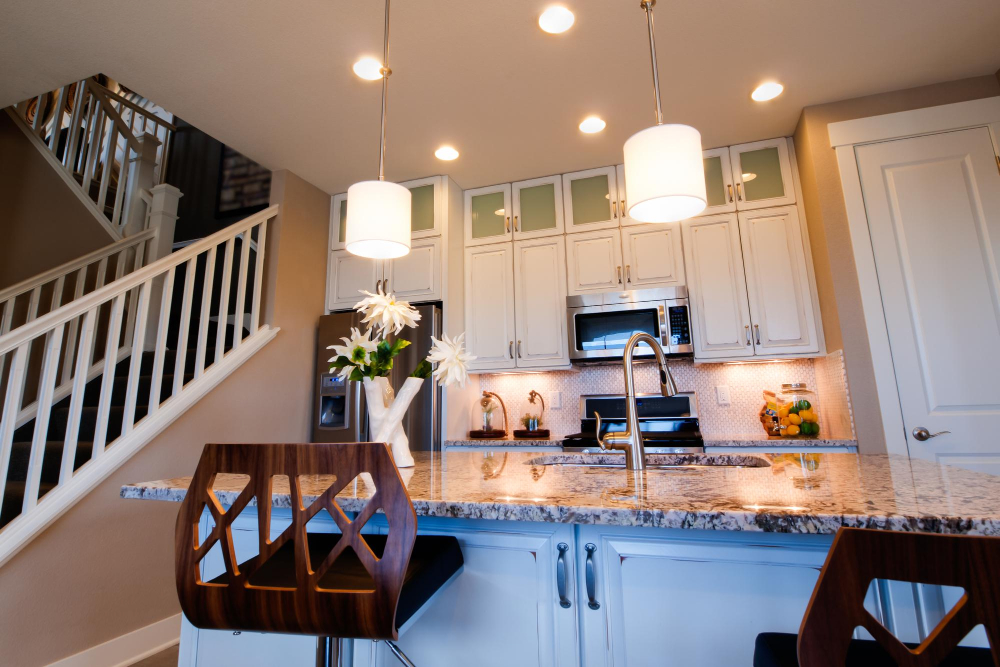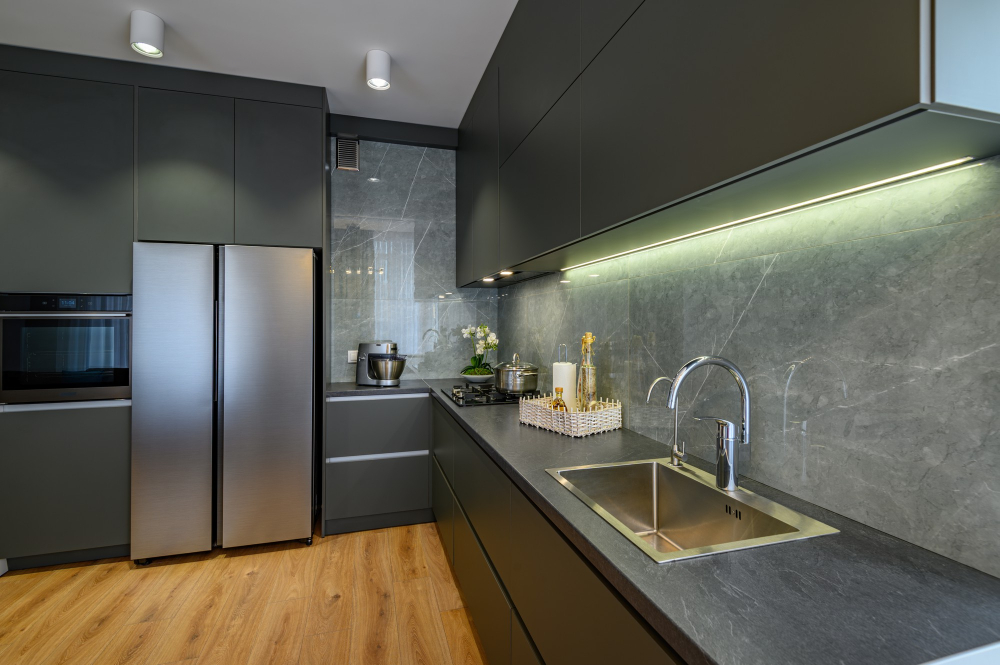Last updated on
The kitchen provides the hardest challenge when it comes to lighting. Find out how to get it right.
Any interior designer will know that you can put your all into making a space look beautiful with a perfect color scheme and range of ornaments, but if the lighting is off, the design will look off too.
The trick is to infuse warm light as much as possible.
While cold lighting can make a space more vibrant and better for performing tasks, it can also over-accentuate a room and take the edge off certain design features.
Warm light, on the other hand, softens a room and asks the eye to take in the details of its own accord, helping the design to be more appreciated and natural as a result.
This is perfectly achievable in most rooms of the house, but when it comes to the kitchen, things can get a little tricky.
What's Inside
The Problem with the Kitchen

Over the last twenty-five years, the kitchen has taken on two separate roles. On the one hand, it is a purely practical space designed for cooking and preparing food.
On the other hand – due to the downfall of the dining room – it has recently become the heart of the home, where the family and guests come to gather and converse.
So how do you accommodate this? Bright light is necessary for a practical space – after all, you need to see what your hands are doing! – but it can easily make the kitchen more clinical and cause the design you have chosen to feel overbearing.
The (Wrong) Answer to the Problem

The vast majority have dealt with the problem by running with it – designing a modern kitchen with cold white light to brighten every corner. Sure, it might look a little clinical, but it’s only one room in the house, right?
Wrong. This isn’t just one room, it’s become the most important room. For this reason, it’s similarly important to work out a balance.
Let’s look at the dining room for a moment. We mentioned before that the dining room has essentially died out in the 21st century, especially as a hub of a home. But that’s not the case for every household.
In Jewish culture, for instance, the significance of food and community has meant the dining room is still very much alive. In this instance, typical lighting includes silver menorahs or shabbat candlesticks, both used for religious purposes but also to create a warm, relaxing atmosphere in the room itself.
Keep in mind that the dining room is just as practical as the kitchen. It’s still a place where you present the food and have dinner, so brighter lighting should be just as necessary. Yet clearly, it doesn’t have to be.
The Case For Warm Lighting

As we mentioned before, when it comes to the kitchen, it is all about balance. It isn’t enough to think cold lighting is the answer, but similarly, it isn’t practical to go for warm lighting. Instead, you should find a mix and allocate certain tasks.
In a recent interview, interior design expert, Niki Wright, explained that kitchen lighting should be a mix of “task light” and “ambient light”. According to her, the task-based lighting should be local to the task-orientated areas, not as ceiling downlights but as cabinet-mounted overheads.
Similarly, kitchen trends such as low-hanging pendants and island lights can be utilized for a warm ambiance. Remember, warm light doesn’t mean low light. Using a lower kelvin lightbulb with a high lumen count can ensure that the light is still layered and strong but maintains that warmer color.
Apart from this, the kitchen table can take a leaf out of the dining room’s book. Layering the top with candlesticks can further help the room to feel cozy, and relaxing, and ensure that the kitchen remains the perfect space for gatherings.
With this in mind, you can have a room that carries out the perfect transition – starting with bright, practical lighting at one end and transitioning into low-level, warm lighting at the other.
This might vary depending on your layout, of course, but it’s a good idea to keep it in mind and try your hardest to compliment both characteristics of your beloved kitchen.




